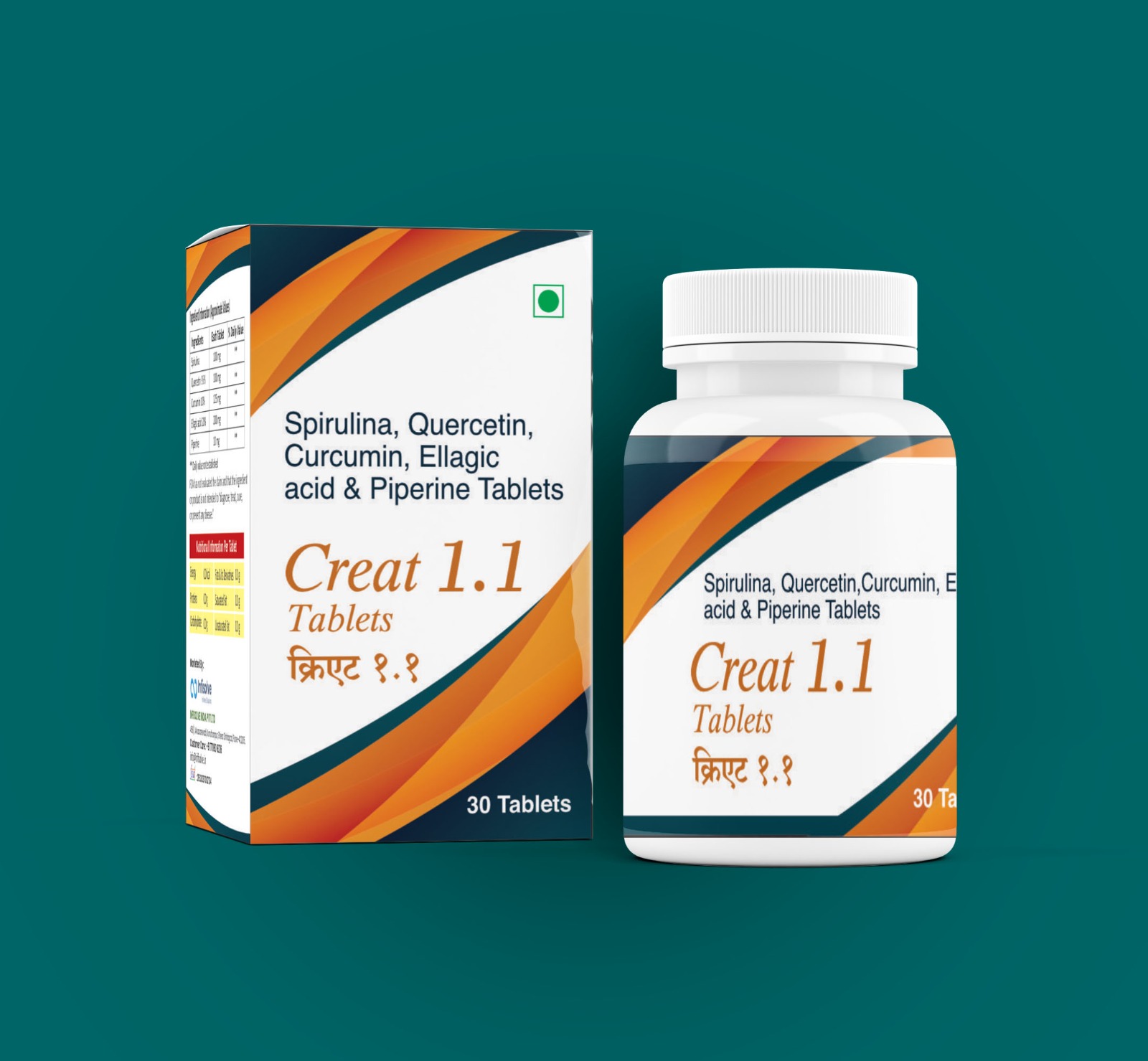The four molecular pathways extensively studied for their role in DM complications like nephropathy, neuropathy, retinopathy are:
- Increased intracellular formation of advanced glycation end-products (AGEs)
- Increase in the flux of glucose through polyol pathway
- Increased flux through the hexosamine pathway
- Activation of protein kinase C (PKC)
Polyol Pathway & Aldose Reductase
The first on the list (Polyol Pathway) is mediated through the hyperactivity of Aldose Reductase in the glomerulus. Aldose reductase (AR), which is the first enzyme in the polyol pathway, is a cytosolic, monomeric oxidoreductase enzyme that catalyses the NADPH dependent reduction of glucose.
The pathogenic role of AR in diabetic nephropathy is a significant increase of the enzyme in the glomerulus. Hyperactivation of AR in renal cells leads to the generation of AGEs. These AGEs along with the generation of reactive oxygen species (ROS) results in the expression and activation of transcription factors like nuclear factor NF-кB and PKC, which are implicated in the pathogenesis of diabetic nephropathy.
AGEs also contribute to the release of proinflammatory cytokines, expression of growth factors and adhesion molecules. Data suggest that inhibition of AR in kidney contributes to the protective effect on diabetic kidney.
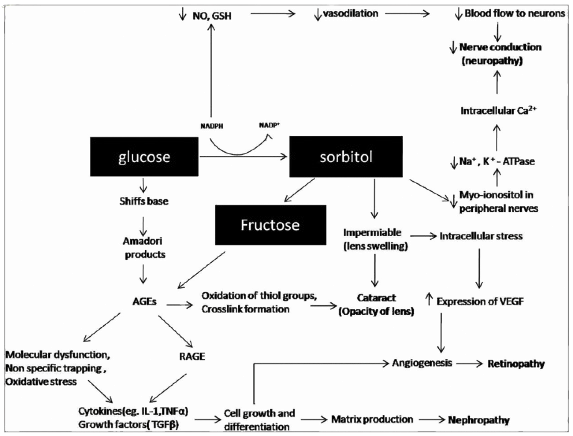
Preventing CKD due to Diabetes
When your patient has progressed towards Chronic Kidney Disease (CKD) due to DM, treatment only with anti-hypertensives, sugar control measures may not be enough.
To prevent chronic kidney disease (CKD) due to diabetes, control blood sugar (HbA1c <7%), manage blood pressure (<130/80 mmHg), and eat a kidney-friendly diet (low salt, moderate protein, controlled potassium/phosphorus). Regular check-ups for kidney function (eGFR, UACR) and avoiding harmful medications (NSAIDs) also help protect kidney health.
Herbal Medicine as an Option
Herbal medicine can be a better option for chronic kidney disease (CKD) due to diabetes as it offers natural compounds that may protect kidney function.
Creat 1.1 is a combination of bioactive compounds from plants is specially formulated to support kidney health by improving the functioning of kidney. This tablets, made with spirulina and bioactive compounds like quercetin, ellagic acid, curcumin.
Quercetin
Flavonoids like quercetin, which were reported to have potent ARI activity, were found to show protective effect as well as prophylactic role on the diabetic kidney by decreasing the oxidative stress.
Quercetin has demonstrated in vitro and in vivo antidiabetic properties. It improves oral glucose tolerance, as well as pancreatic-cell function to secrete insulin.
It inhibits the-glucosidase and DPP-IV enzymes, which prolong the half-life of glucagon-like peptide-1 (GLP-1) and glucose-dependent insulinotropic polypeptide (GIP). Quercetin also suppresses the release of pro-inflammatory markers such as IL-1 , IL-4, IL-6, and TNF-alpha.
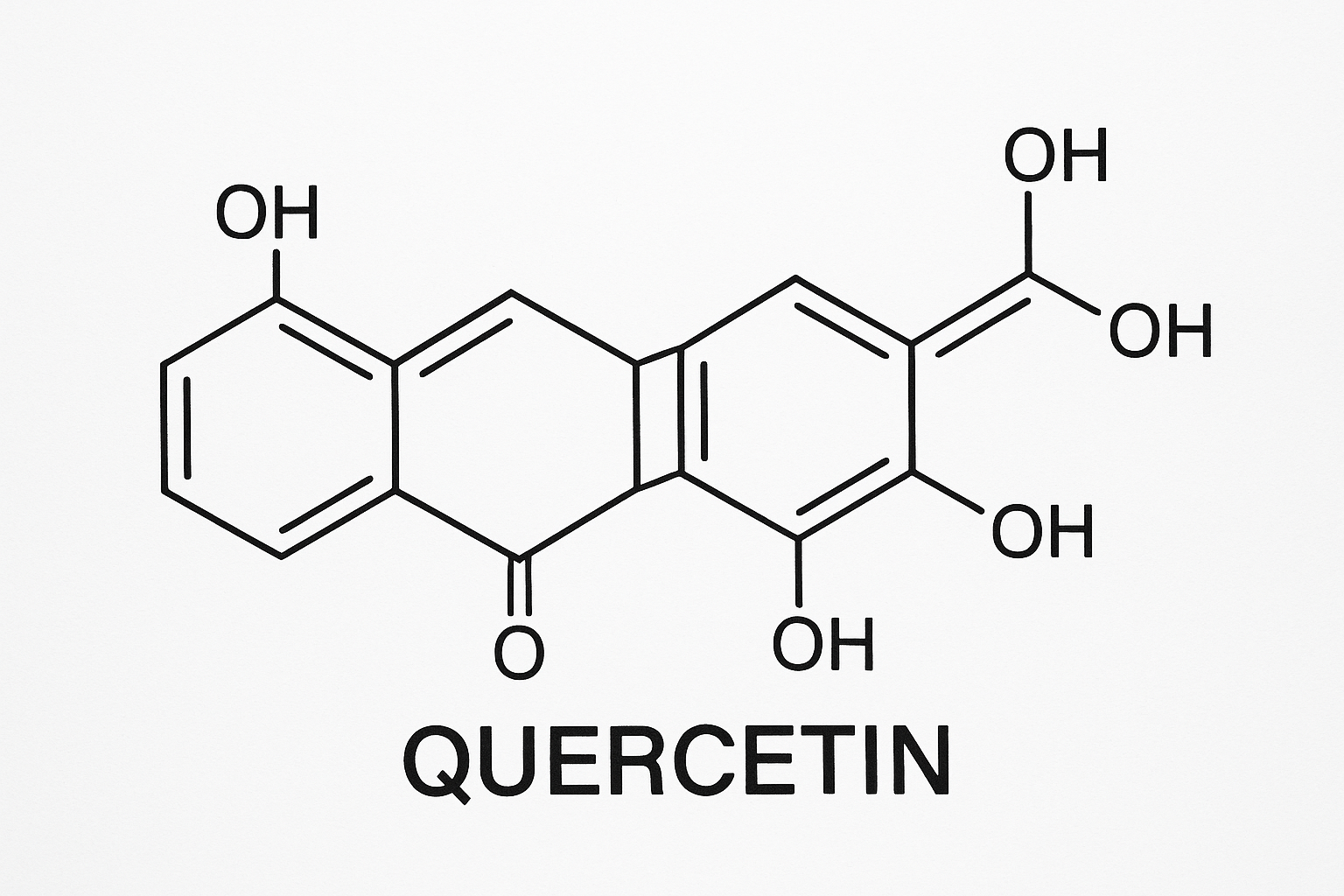
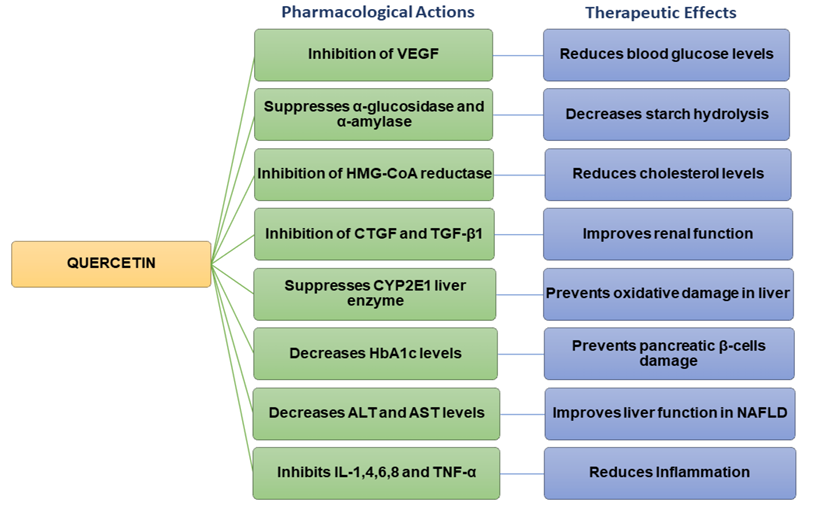
Curcumin
Curcumin, a potent inhibitor of AR, was reported to show its efficacy in diabetic nephropathy. It reverses the alterations in the activities of kidney cellular enzymes associated with DM, reverses the decrease in polyunsaturated fatty acids to saturated fatty acids ratio and ATPases activity of renal membranes, lowers nephromegaly in diabetic animals. Curcumin also acts through prevention of nuclear translocation of NF-kB, which is responsible for mesangial expansion.
Curcumin is a potent scavenger of reactive oxygen and nitrogen species such as hydroxyl radicals and nitrogen dioxide radicals. Curcumin is effective in preventing glucose-induced oxidative stress in the endothelial cells and in the heart of diabetic animals. It has also been shown that short-term treatment of diabetic rats with curcumin prevents diabetes-induced decreased antioxidant enzyme levels and kidney dysfunction. p300 is known to associate with the p65 subunit of NF-kappaB to regulate gene expression. These changes may be mediated by the inhibition of histone acetyltransferase p300.
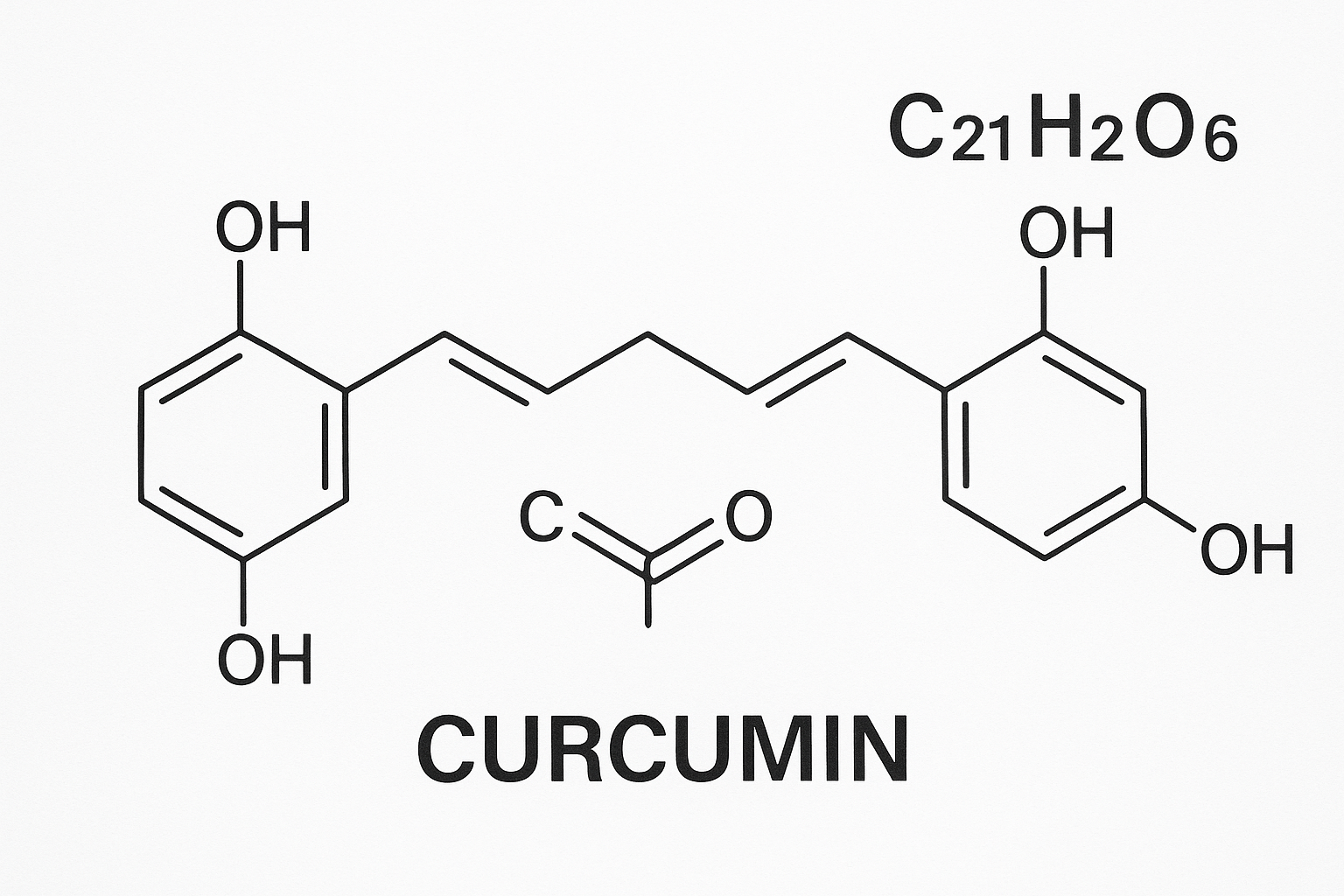
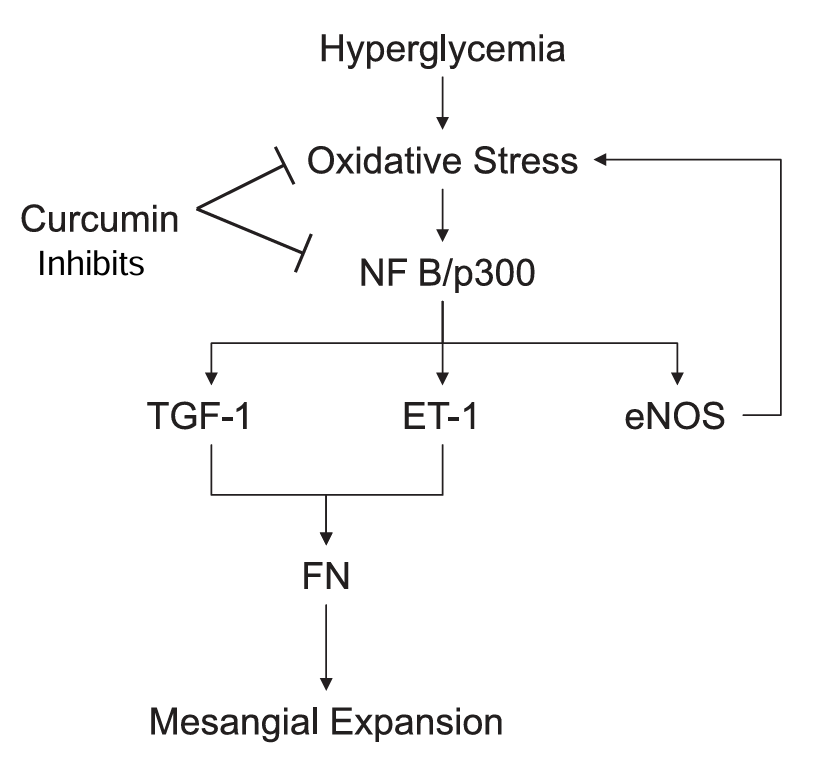
Ellagic Acid
Ellagic acid was found to inhibit AR in vitro and was also found to significantly diminish renal activity of AR and sorbitol dehydrogenase, as well as suppressed renal AR mRNA expression along with inhibition of IL-6, IL-1β, tumour necrosis factor alpha (TNF-α) and monocyte chemoattractant protein 1 in vivo suggesting the combined effect of ARI and anti-inflammatory activities of ellagic acid for its beneficial role in diabetic nephropathy.
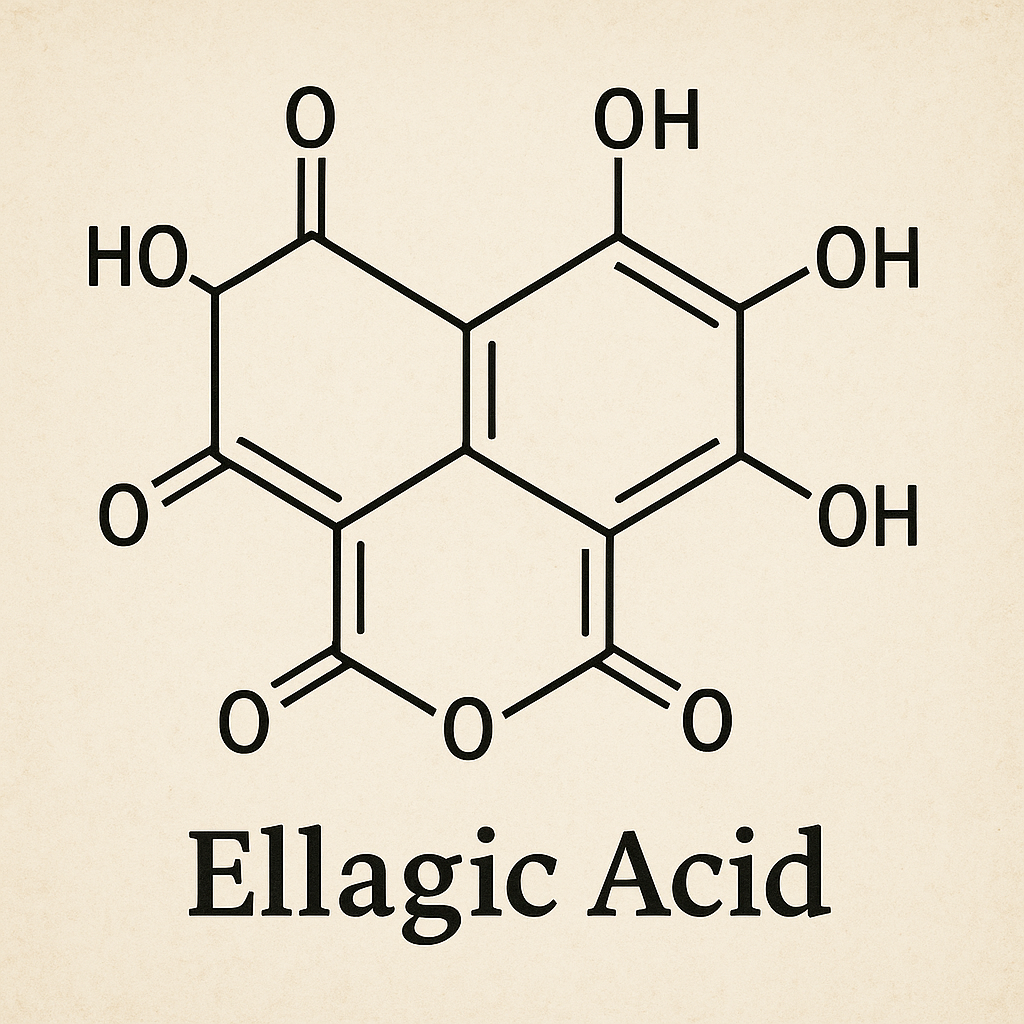
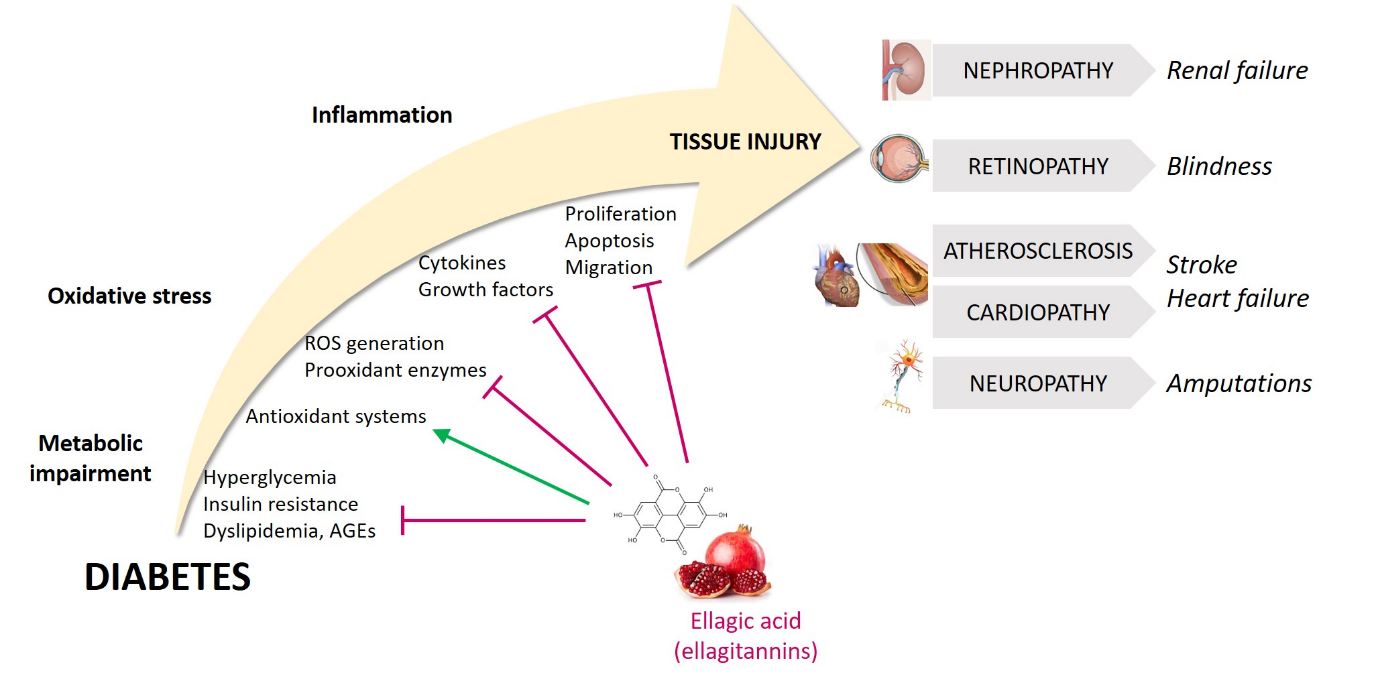
Spirulina
Moreover, Spirulina is an affluent source of vitamins A, C, and E, as well as thiamine, riboflavin, pyridoxine, niacin, and folic acid. It also provides an array of minerals, including magnesium, potassium, iron, calcium, sodium, phosphorus, copper, zinc, and selenium. Spirulina’s pigment profile encompasses chlorophyll-a, phycocyanin (a blue pigment), carotenoids (including beta-carotene), and xanthophylls.
Its antioxidant properties are attributed to compounds such as phycocyanin and betacarotene, which help safeguard cells against oxidative damage. Spirulina further contains various polysaccharides known for their immune-enhancing properties. As a protein source, Spirulina stands out, comprising approximately 60-70% protein by weight. The protein it provides is highly digestible and contains all essential amino acids. It also contains various carbohydrates, including glucose, fructose, and polysaccharides. While its lipid content is relatively low, Spirulina does contain essential fatty acids, primarily ω-6 fatty acids such as linoleic acid including γ- linolenic acid.
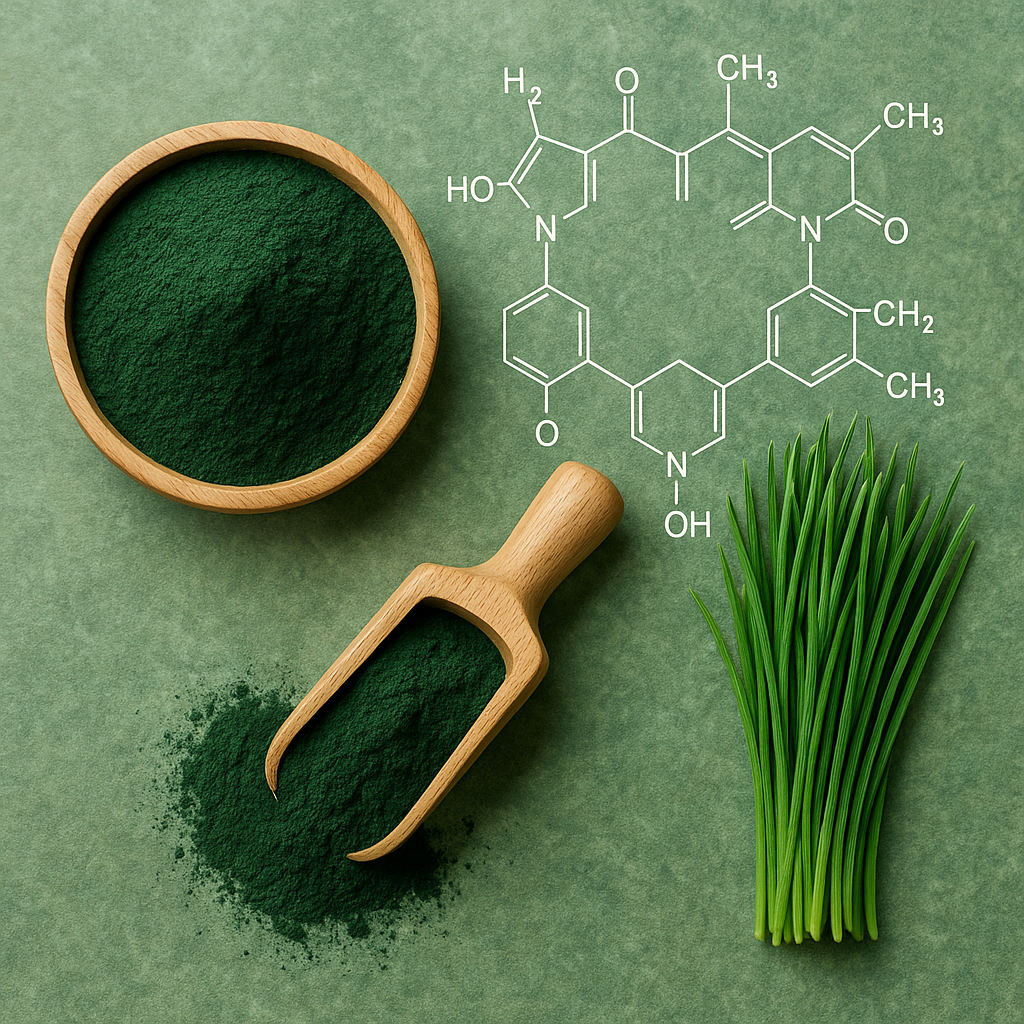

Rationale of the Creat 1.1 combination
The ARIs (Quercetin, Curcumin and Ellagic Acid) act by inhibiting oxidative stress or inflammatory changes that occur during DM. As a matter of fact, polyol pathway leads to oxidative stress and inhibition of AR leads to the decrease of oxidative stress. But the protective effect of the above-mentioned ARIs in diabetic complications is due to the ARI activity, thereby decreasing the polyol pathway induced oxidative stress. Spirulina a known scavenger of oxidative stress induced ROS combines with the clinical efficacy of ARIs. Thus, a combination with both ARI activity and antioxidative properties would be more effective than a compound with either ARI or antioxidant property alone.
